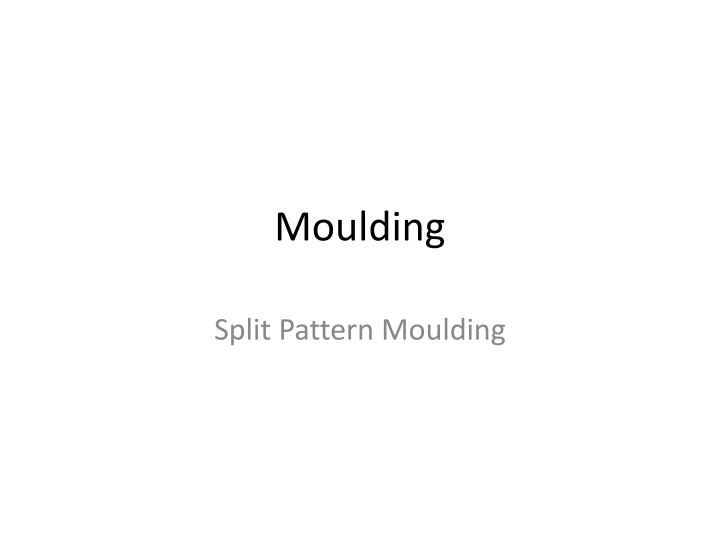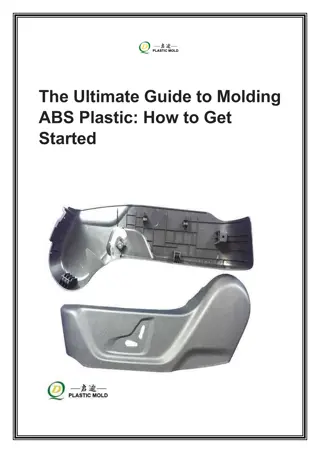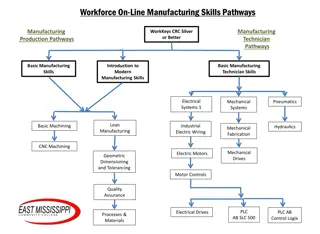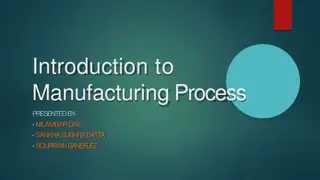Guide to Moulding Process in Manufacturing
Moulding is a crucial part of the manufacturing process involving creating molds using sand mixture and patterns. This guide covers the steps and tools required for effective moulding, including creating the mold, using essential tools like bellows, trowel, and riser pin, and assembling the mold for production.
Download Presentation

Please find below an Image/Link to download the presentation.
The content on the website is provided AS IS for your information and personal use only. It may not be sold, licensed, or shared on other websites without obtaining consent from the author.If you encounter any issues during the download, it is possible that the publisher has removed the file from their server.
You are allowed to download the files provided on this website for personal or commercial use, subject to the condition that they are used lawfully. All files are the property of their respective owners.
The content on the website is provided AS IS for your information and personal use only. It may not be sold, licensed, or shared on other websites without obtaining consent from the author.
E N D
Presentation Transcript
Moulding Split Pattern Moulding
What is Mould? A mold is made by shaping a suitable sand mixture around a pattern of the desired form. A metal or wood box (flask) is used to retain the sand, has two parts Cope & Drag.
MOLDING TOOLS AND ACCESSORIES 1. Bellows 2. Molder's Bulb 3. Spoon-and-Gate 4. Cutter
5. Trowel 6. Lifter 7. Hand Rammer 8. Shovel
9. Riser Pin 10. Draw Spike & Draw Screw 11. Gate Cutter
12. Strike-Off Bar 13. Spruce Cutter
Step 1 First, the drag is placed pin down on a molding board. Then, half of the split pattern is placed in the center of the molding board.
Step 2 A fine parting sand is dusted over the pattern.
Step 3 Molding sand is riddled to a depth of about one inch over the pattern.
Step 4 Additional sand is added to fill the drag. A hand rammer is used to firmly pack and ram sand.
Step 5 The mold is struck off or leveled with the strike-off bar. Bottom board is placed on the top of the mold.
Step 6 The drag is turned over and the mold board is removed.
Step 7 The cope is placed on the drag pins. Then, the second half of the pattern is aligned using the alignment pins.
Step 8 The pattern is dusted lightly with the parting sand.
Step 9 First, the pattern in cope is riddled with molding sand and rammed. Then, sprue is cut in the cope (a vertical hole) down to the parting line and the pouring basin is formed at the top of the sprue. Finally, a riser hole is also cut at this step.
Step 10 Cope and drag are separated and runners and in-gates are cut to connect the sprue hole to the mold cavity.
Step 11 First, A draw screw is inserted in the pattern and rapped lightly to loosen the pattern. Then the split patterns are carefully removed from the cope and drag.
Step 12 Repairs and removal of foreign particles and placement of cores.
Step 13 The Cope is carefully placed on the drag and the finished mold is taken to pouring area.
Assignment Now you are going to make a spilt pattern mould in the shop.























